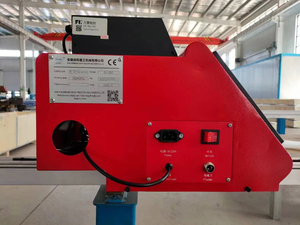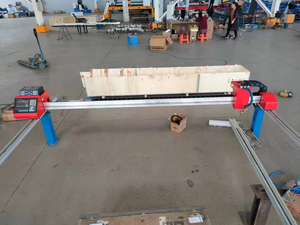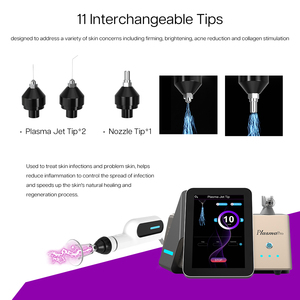
All categories
Featured selections
Trade Assurance
Buyer Central
Help Center
Get the app
Become a supplier

(5457 products available)







































An inverter plasma is cutting equipment that uses plasma technology to cut different types of materials. There are various types of plasma cutters available for sale on the market now.
Air Plasma Cutters
An air plasma cutter uses compressed air as plasma gas to cut through metals. It can cut through almost any conductive material, including steel, aluminum, copper, brass, and titanium. Users of the device must ensure the air compressor is tidy and meets the pressure requirement, which is between 70 and 80 psi. The benefit of using an air plasma cutter is that, unlike other plasma cutters that use different gases, it is easy to come by and use an air compressor as a cutting gas.
Shielded Plasma Arc
The shielded plasma arc cutter impedes arc diffusion by using the flowing granules of glass and fluoride plasma. The method improves concentration and makes it less obstructed. This increases the quality and output of the cut, making shielded plasma arc cutters an attractive option for those looking for a good quality but affordable plasma cutter.
Hig Frequency Plasma Arc
High-frequency arc plasma cutters make use of high-frequency arcs to initiate ionization of the plasma gases. The implementation of the high-frequency arcs allows for non-contact pilot arcs. This makes it easier for the cutter to start operating. The benefits of high-frequency plasma cutters include fast starting speed, smooth operation, and cut quality. However, it is essential to note that high-frequency plasma cutters are susceptible to electromagnetic interference. Therefore, they may require additional noise filters and electronic components to reduce the effect of EMI.
Non-Touch DC Plasma Arc
Non-touch direct current plasma arc cutters work without pilot touching arcs. They ionize gas in the torch, which strikes an target metal. It creates a narrow cut the width of the arc. Non-touch DC plasma arcs have small heat-affected zones. This makes them useful for precision cutting in thin material. They minimize distortion and damage. In addition, non-touch DC plasma cutters are easy to use and don't require contact with the workpiece to start an arc. This makes starting faster and reduces tip wear.
Thermal Dynamic Plasma Cutters
Thermal dynamics plasma cutters work without pilot touching arcs. They ionize gas in the torch, which strikes an target metal. It creates a narrow cut the width of the arc. Non-touch DC thermal dynamic plasma cutters have small heat-affected zones. This makes them useful for precision cutting in thin material. They minimize distortion and damage. In addition, thermal dynamic plasma cutters are easy to use and don't require contact with the workpiece to start an arc. This makes starting faster and reduces tip wear.
The plasma cutter inverter machine is a versatile tool used in various industries for cutting different types of metals. Here are some of the common application scenarios for this machine:
Metal Fabrication Industry
Automotive and Marine Industries
Construction and HVAC
Art and Sculptures
Neon Sign Repair
Output power:
The output power of the inverter plasma cutter determines its cutting capacity and whether it can handle thick materials. When selecting the appropriate inverter plasma cutter output power, the material thickness and type must be considered.
Cutting thickness :
It is crucial to match the plasma cutter's output power to the material thickness to be cut. Different plasma cutters are designed for various thicknesses, so ensure the chosen cutter has sufficient power to cut through the materials at the required thickness.
Arc restriking:
Ensuring quick arc-restriking is essential for maintaining productivity and efficient cutting. This feature allows the plasma cutter's arc to reignite instantly if it extinguishes temporarily, such as when cutting through gaps or interruptions in the material. Quick arc-restriking reduces downtime and minimizes the need for manual intervention to restart the cutting process.
Protective Components:
Consider a plasma cutter with protective components, such as a thermal overload protector, to prevent damage from prolonged use or overheating. The thermal overload protector automatically shuts off the plasma cutter when it detects excessive heat, protecting the internal parts from damage. Choosing a cutter with this protector can prolong its lifespan and maintain its optimal performance.
Operating Voltage:
The operating voltage of a plasma cutter indicates the input power needed to operate the equipment. Plasma cutters typically have low voltage (such as 110/220V) and high voltage (such as 380/440V) options. It's essential to select a cutter with a voltage compatible with the available power supply. Additionally, some plasma cutters have a voltage display on the front panel, allowing users to monitor and adjust the input voltage to ensure proper operation.
Q1: What works better, a plasma cutter or a torch?
A1: An inverter plasma cutter is more effective than a torch since it can cut through metal of varying thicknesses quickly and accurately with a focused heat source. A torch cuts inconsistently and is only applicable on thin metals.
Q2: What are the benefits of plasma cutting?
A2: Plasma cutting offers a range of benefits including the ability to cut through different types of metals, the speed at which it can cut, greater accuracy and precision, and cleaner cuts with minimal residuals.
Q3: What types of materials can an inverter plasma cutter cut?
A3: An inverter plasma cutter can cut through various types of metals including steel, copper, brass, titanium, and aluminum. The materials can be of varying thickness, including thin sheets and thick plates.
Q4: How thick of metal can a plasma cutter cut?
A4: The capacity of a plasma cutter to cut through metal depends on its specifications. Generally, an inverter plasma cutter can cut metal from several inches to over a foot when using the correct settings and parts.
Q5: Does the plasma cutter also weld?
A5: No. A plasma cutter's sole function is to cut through metals. However, there are hybrid machines that can cut and weld simultaneously but may not deliver the same quality as a dedicated cutter or welder.